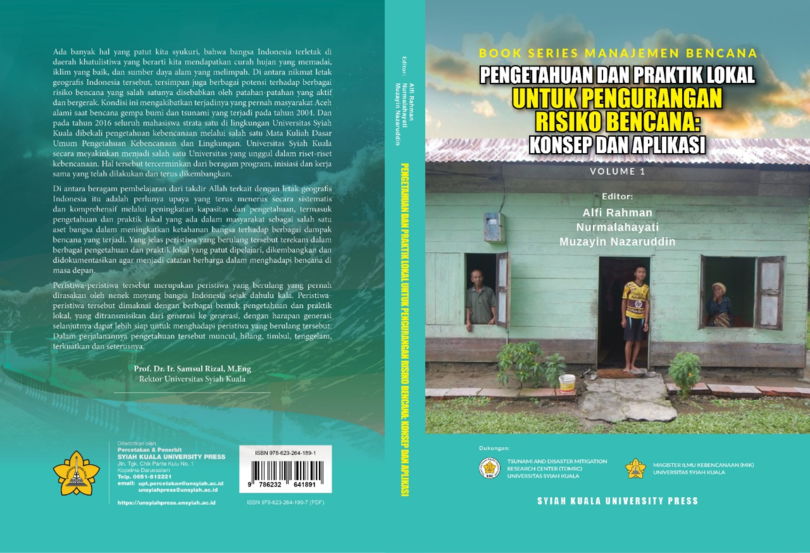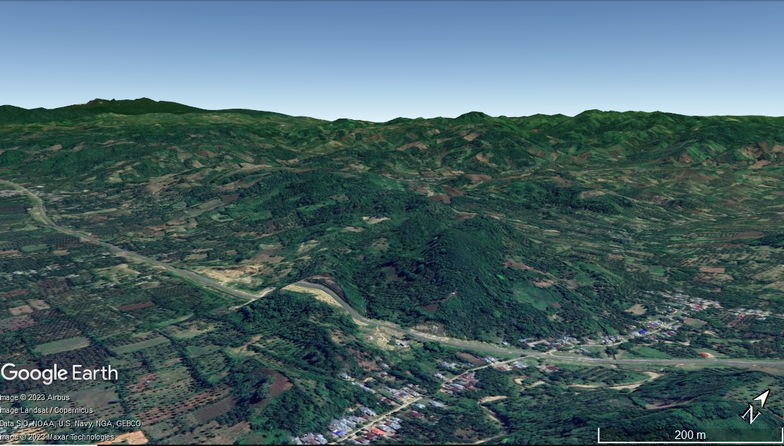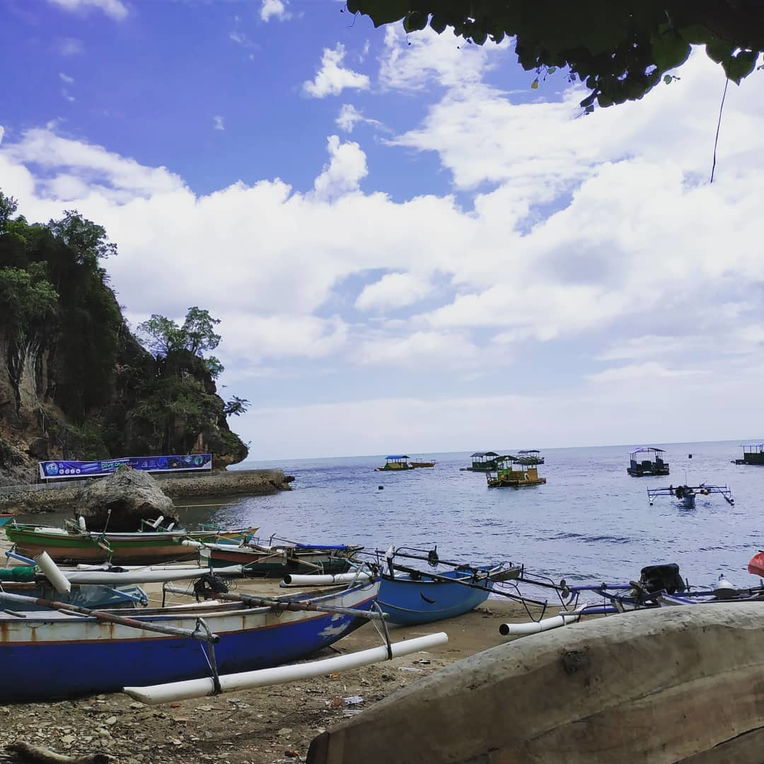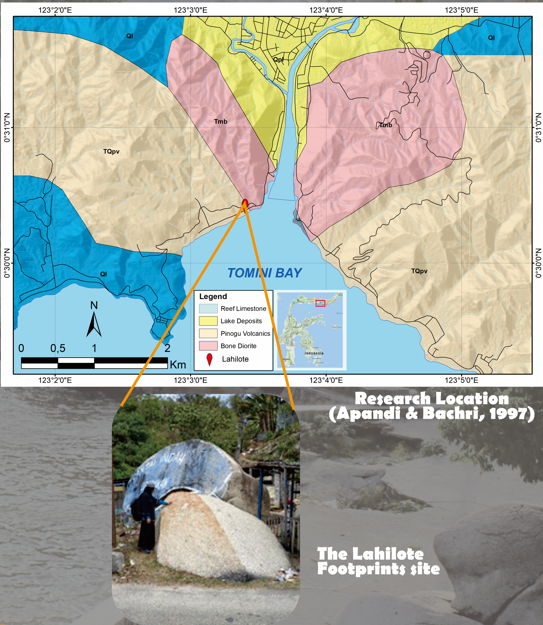First Pilot Village Geopark in Gorontalo Province
The PHP2D Team and the P3D Team carried out a number of community service programs in Botubarani Village, Gorontalo. The PHP2D and P3D programs were implemented with funding from DITJEN BELMAWA DIKTI. These two programs have made Botubarani Village the first geopark pilot village in Gorontalo.
Suma, M.D., & Manyoe, I.N. (2021). First Pilot Village Geopark in Gorontalo Province dalam Geopark, Manyoe I.N., Kuang, X., & Arifin, Y.I. (2021). (Eds) (Novateur Publication, India).
Kearifan Lokal Ritual Payango hingga Ramalan Panggoba sebagai Mitigasi Bencana Masyarakat Gorontalo

Book Series Manajemen Bencana. Pengetahuan dan Praktik Lokal untuk Pengurangan Risiko Bencana: Konsep dan Aplikasi Volume 1.
Bencana gempa dan tsunami 26 Desember 2004 di Aceh menyebabkan jatuhnya korban jiwa dan harta benda. Buku ini diterbitkan tanggal 26 Desember 2020 dalam rangka memperingati 16 tahun tsunami Aceh. Tidak hanya berisi pengetahuan tentang gempa dan tsunami namun membahas pengetahuan dan praktik lokal dalam rangka mengurangi risiko bencana di beberapa daerah di Indonesia. Salah satu bab dalam buku ini membahas tentang kearifan lokal ritual Payango dan ramalan Panggoba sebagai upaya mitigasi bencana di daerah Gorontalo. Semoga buku ini membawa manfaat bagi pengurangan risiko bencana di Indonesia.
Taslim, I., Indrianti, M.A., & Manyoe, I.N. (2020). Kearifan Lokal Ritual Payango hingga Ramalan Panggoba sebagai Mitigasi Bencana Masyarakat Gorontalo dalam Pengetahuan dan Praktik Lokal untuk Pengurangan Risiko Bencana: Konsep dan Aplikasi, Rahman, A., Nurmalahayati., & Nazaruddin, M. (Eds) (UNSYIAH Press, Aceh).
Landslide Analysis based on Rock Mass Classification and Kinematic Analysis in Daenaa Area, Gorontalo

Research location.
Gorontalo province crossed by a Gorontalo fault with a movement of around 11 mm/year. The existence of this fault zone affects the distribution and configuration of geological structures and increases the potential for landslide in the Gorontalo area, especially areas that crossed by Gorontalo fault such as Daenaa. This study aims to identify rock mass classification and using kinematics analysis to landslideprone sites in the Daenaa and surrounding areas. The method used consists of geological observations, Scanline Mapping, rock mass classification using Rock Mass Rating (RMR), Slope Mass Rating (SMR), and kinematics analysis on slopes. The results showed the slope mostly composed of partially weathered andesite rocks. The slope discontinuities dominated by fractures either affected by tectonic or weathering. Scanline mapping and rock mass classification are focused at 4 stations namely SC 1, SC 2, SC 3, and SC 4. The RMR classification results indicate the rock class consists of 2 classes, namely Good Rock and Fair Rock. SMR classification shows the slopes consist of stable and partially stable. Kinematics analysis shows the failure type is toppling failure. The results of observations indicate the role of the geological structure in the Daenaa area is influential in controlling landslide in the study area. Fracture is the main factor causing landslide. The occurrence of minor faults in the study area also decreases the stability of the rock slope. This condition makes it necessary to take action in the surrounding community of Daenaa area related to mitigation of mass movement disasters.
Usman, F.C.A., Manyoe, I.N., & Kasim, M. 2020. Landslide Analysis based on Rock Mass Classification and Kinematic Analysis in Daenaa Area, Gorontalo. The 49th IAGI Annual Convention & Exhibition. IAGI, Lombok.
3D Modeling of Olele Eco-Geotourism Area Based on Satellite Imaging, Geology, and Marine Analysis

Olele Beach.
The identification of the potential for eco-geotourism is not sufficient to reveal the potential of the Olele area so that technological innovation is needed to model the design of the eco-geotourism area. The purpose of this research is to make a 3D modeling of Olele eco-geotourism area design based on satellite, geological, and marine data analysis. This research method uses satellite image data technology combined with a literature review. Satellite imagery uses the National Digital Elevation Model (DEMNAS) and National Bathymetry (BATNAS) which are processed and analyzed using the GIS application. Literature review refers to books, journals, and maps related to research topics. The results showed that the Olele region has two potential geosites and four potential ecosites. Satellite image data technology not only produces terrestrial topographical models, bathymetry models, and slope class map but also can show the relationship between openings in Jin Cave controlled by geological structures on land, and the unique relationship between Petrosia lignosa and the Olele underwater carbonate shelf model of Olele. Based on the identification and comparison of geosite and ecosite, the Olele area is unique on a local, national, and international scale.
Keywords: 3D Model, Geosite, Ecosite, Ancient Volcano, Coral Reef.
Abduh, A. G., Usman, F. C. A., Tampoy, W. M., & Manyoe, I. N. (2020). 3D Modeling of Olele Eco-Geotourism Area Based on Satellite Imaging, Geology, and Marine Analysis. Journal of Earth Sciences and Technology, 1(2), 90-101.
Geology of Lahilote Folklore as a Site to Develop Geotourism in Gorontalo

Lahilote footprints in granodiorite rock.
Lahilote folklore is Gorontalo folklore about the footprints of a man named Lahilote. Lahilote footprints are sculpted on rocks located on the southern coast of Gorontalo. Lahilote folklore has been studied by Gorontalo cultural experts, but there is no paper in the field of geology. This study aims to assess the Lahilote footprint site based on its geological characteristics. This research is expected to contribute to the development of geotourism in Gorontalo. The method used is field observation and laboratory analysis. Geosite analysis using the classification of geosite and geomorphosite according to Kubalikova quantification parameters. Field observations include geomorphological and field geological surveys. Rock samples taken from the Lahilote footprint site. Laboratory analysis includes a petrographic analysis and Scanning Electron Microscopy (SEM). The results showed that the Lahilote footprint site was in the intrusion hilly unit. Lahilote footprint sites are formed due to the presence of veins in rocks. The destruction of the side of the rock at the vein boundary leaves the other side of the rock which resembles a footprint. The general description of cite is medium to coarse grained, phaneritic, holocrystalline, hypidiomorphic granular, consists of quartz, alkaline feldspar, plagioclase and mafic minerals. The Lahilote footprint site is granodiorite rock. Based on petrographic analysis, rock-forming minerals are Bt (biotite), Hbl (hornblende), Opq (opaq), Pl (plagioclase), and Qz (quartz). The results of interpretation using SEM show element prediction data contained in rock samples. Lahilote footprint rock sites contain elements of Silicon, Titanium, Allumunium, Ferrum, Manganese, Magnesium, Calcium, Sodium, Potassium, and Cromium. The feasibility values in the geosite and geomorphosite assessments consisting of scientific and intrinsic values (3.5), education values (3), economics values (1), conservation values (2.5, and additional values (2.5) indicate that the geosite Lahilote footprint is feasible to be developed to support geotourism in Gorontalo.
Manyoe, I.N., Masulili, F., & Hutagalung, R. 2020. Geology of Lahilote Folklore as a Site to Develop Geotourism in Gorontalo. The 49th IAGI Annual Convention & Exhibition. IAGI, Lombok.
